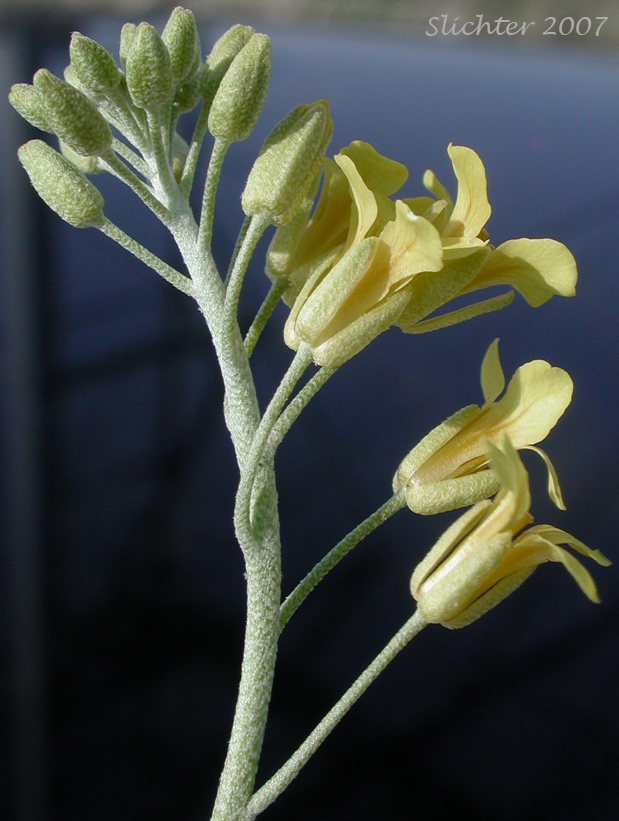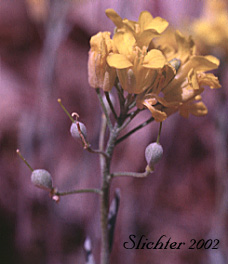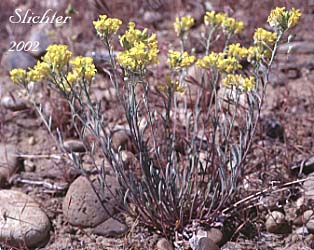
 The
photo at right shows the flowers and fruits of Columbia bladder pod. Photographed
2 miles west of the Vernita Bridge across the Columbia River, central Washington........April
20, 2002.
The
photo at right shows the flowers and fruits of Columbia bladder pod. Photographed
2 miles west of the Vernita Bridge across the Columbia River, central Washington........April
20, 2002.
Columbia bladder pod is a perennial wildflower with several to many ascending to erect stems arising 20-40 cm from a cluster of basal leaves. The stems may be simple or branched. The herbage consists of whitish to silvery, closely appressed hairs. The basal leaves range from 3-12 cm long with oblanceolate to obovate blades, the blades from 2-15 mm wide and tapering gradually to slender petioles as long as the blades. The leaf margins range from entire to slightly toothed (See photo of basal leaf below). The stem leaves are much reduced in size (1-5 cm long) and linear to linear-oblanceolate in shape.
The light yellowish flowers are found on the upper stems. Each of the four petals is spatulate in shape and 6-9 mm long. The sepals are 3-5 mm long while the pedicels are 4-16 mm long. The pedicels ascend at first before becoming recurved in fruit (See photo at right.). The fruits are globose, 3-4 mm in diameter, and slightly wider above the middle with the style perched atop the fruit. The style is generally about equal to the length of the fruit (See photo at right.)
Columbia bladder pod may be found on sandy and gravel bar soils near rivers and into arid ponderosa pine forests. It may also be found on limestone talus along the Grande Ronde River.
Columbia bladder pod may be found east of the Cascade Mts. from British Columbia south to northern Oregon and east to Nez Perce County, Idaho.

